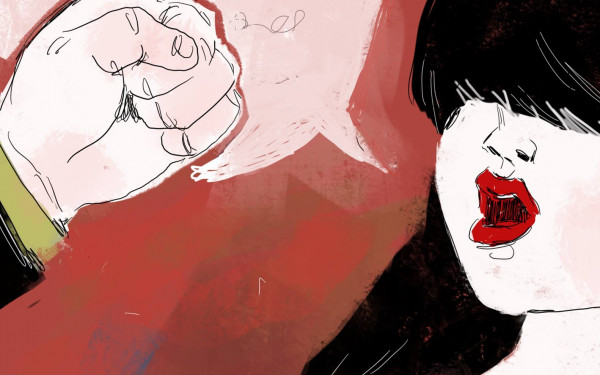Restaurant? More Like Sex-taurant
Examining Sexism in the Restaurant Industry
Cara Operations Limited, a company which owns several restaurant chains across Canada, recently revised a new dress code following complaints from female staff that it was too revealing.
Cara applied the mandatory uniform change in all of Bier Markt locations in Quebec and Ontario on Oct. 5, and the decision has since backfired, raising questions about the treatment of women in the service industry. It also launched an inquiry by CBC’s investigative news segment Go Public.
The employees’ gender-neutral uniforms were replaced by a tight blue dress for women, who had to pair it with heels or boots, and weren’t allowed to cover up with a sweater. Men were given the choice of any kind of jeans, a button-down shirt, and running shoes.
After several women contested the rule by wearing their choice of footwear, and some even quit their jobs, Cara made some “compromises.” They offered female employees a longer version of the dress and eventually allowed them to wear a cardigan, provided it be short.
After the CBC’s inquiry into what is considered a human rights violation in both provinces, Cara quickly announced women had the right to decide between both uniforms. Considering that the dress code changed only once it was put under media scrutiny, we need to ask ourselves a few important questions: have we all just accepted that a women’s value in this business—and many others—is equated with her sexual appeal?
Why do we judge male bartenders and waiters based on skill, while women are simply chalked up to how good their asses look when they walk away? How has workplace sexism become so normalized?
A bartender from Montreal who wished to remain anonymous told me that during her one-year employment at Sports Station she would “hear managers telling girls to go fix their bra because their tits looked saggy,” and was told numerous times that “tits sell.”
A waitress who also wished to remain anonymous told me that when she started working at Rosalie’s, a high-end supper club, she was told she would “look a lot better with her glasses off.”
Another bartender named Isabel (last name withheld) told me that her former employers at Sir Winston Churchill Pub Complex placed female employees on specific floors, based on their levels of attractiveness.
The difference between how women and men experienced dress code restrictions was to be expected—male bartenders and waiters I interviewed were rarely told anything about their appearance other than to show up clean.
“It would be weird if my boss commented on the way I looked,” said one.
“I’ve only ever been given a pair of pants and a shirt,” said another.
Cathy Cowan, the President of Cowan & Company Communications Inc., the PR firm representing Bier Markt, denied any ill intent and wrote in an email to Go Public that the new uniforms were chosen to reflect Bier Markt’s “stylish image,” and that the female staff at “various Bier Markt locations were closely involved in the selection process.”
She also said that the majority of the feedback on the uniforms was positive, but due to some complaints, they are offering refunds for the dresses—which employees had to pay for out of their paycheques—as well as the choice to wear pants. This statement is problematic because it justifies the choice of a more revealing uniform for women by blaming today’s trends. It also attempts to shift the blame onto the employees who they say were a part of the uniform selection process.
Despite the dress code changes, some women still feel a marked lack of choice when it comes to employment.
“There’s an understanding for women when you start to work at these places,” said one waitress, “[that] if you don’t take the job someone else gladly will.”
In this case—like so many others—money is in the driver’s seat, forcing women to make the unnecessary decision between taking a job that objectifies them, or walking away broke.

_600_832_s.png)

_600_375_90_s_c1.jpg)


